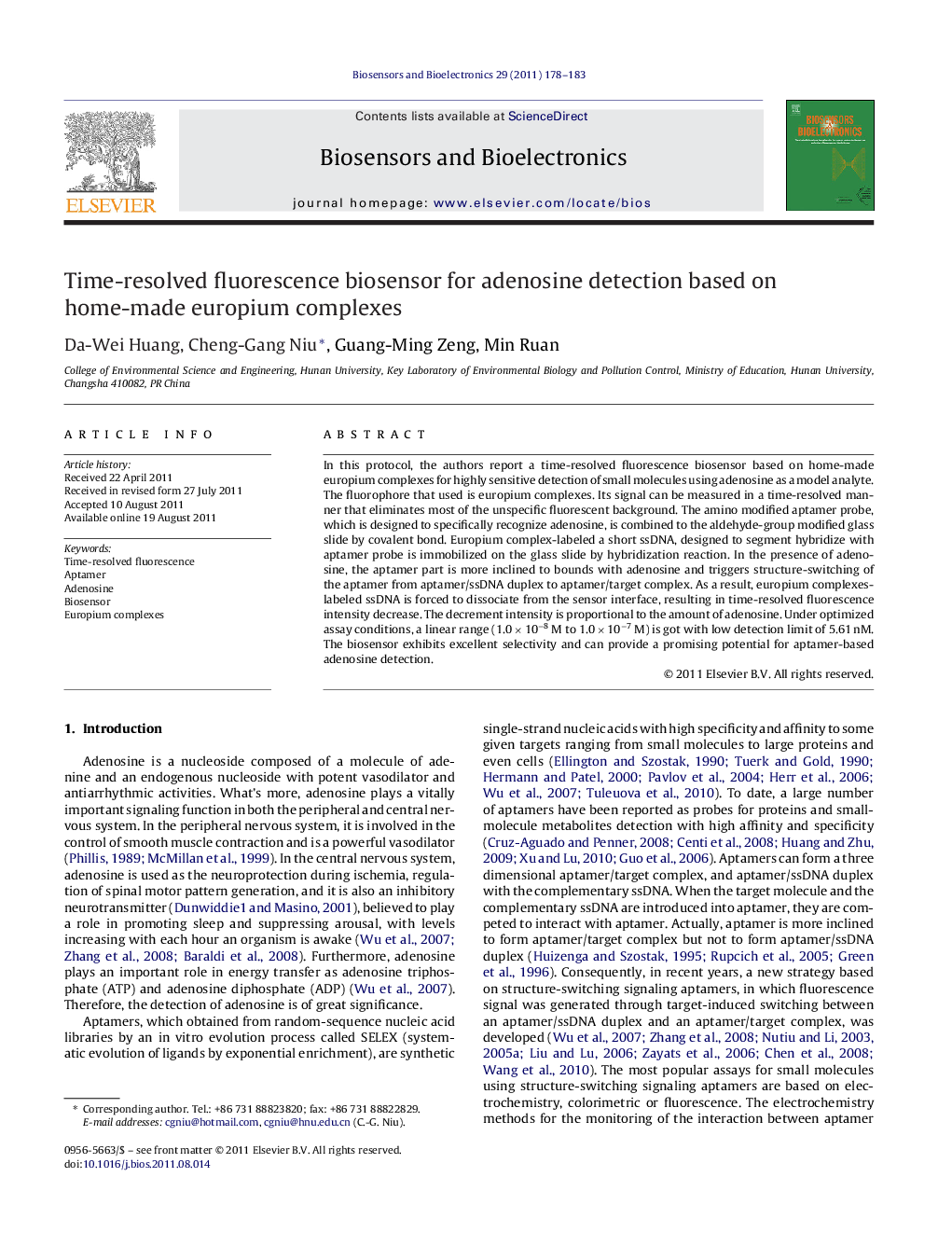| Article ID | Journal | Published Year | Pages | File Type |
|---|---|---|---|---|
| 10429430 | Biosensors and Bioelectronics | 2011 | 6 Pages |
Abstract
In this protocol, the authors report a time-resolved fluorescence biosensor based on home-made europium complexes for highly sensitive detection of small molecules using adenosine as a model analyte. The fluorophore that used is europium complexes. Its signal can be measured in a time-resolved manner that eliminates most of the unspecific fluorescent background. The amino modified aptamer probe, which is designed to specifically recognize adenosine, is combined to the aldehyde-group modified glass slide by covalent bond. Europium complex-labeled a short ssDNA, designed to segment hybridize with aptamer probe is immobilized on the glass slide by hybridization reaction. In the presence of adenosine, the aptamer part is more inclined to bounds with adenosine and triggers structure-switching of the aptamer from aptamer/ssDNA duplex to aptamer/target complex. As a result, europium complexes-labeled ssDNA is forced to dissociate from the sensor interface, resulting in time-resolved fluorescence intensity decrease. The decrement intensity is proportional to the amount of adenosine. Under optimized assay conditions, a linear range (1.0Â ÃÂ 10â8Â M to 1.0Â ÃÂ 10â7Â M) is got with low detection limit of 5.61Â nM. The biosensor exhibits excellent selectivity and can provide a promising potential for aptamer-based adenosine detection.
Related Topics
Physical Sciences and Engineering
Chemistry
Analytical Chemistry
Authors
Da-Wei Huang, Cheng-Gang Niu, Guang-Ming Zeng, Min Ruan,
